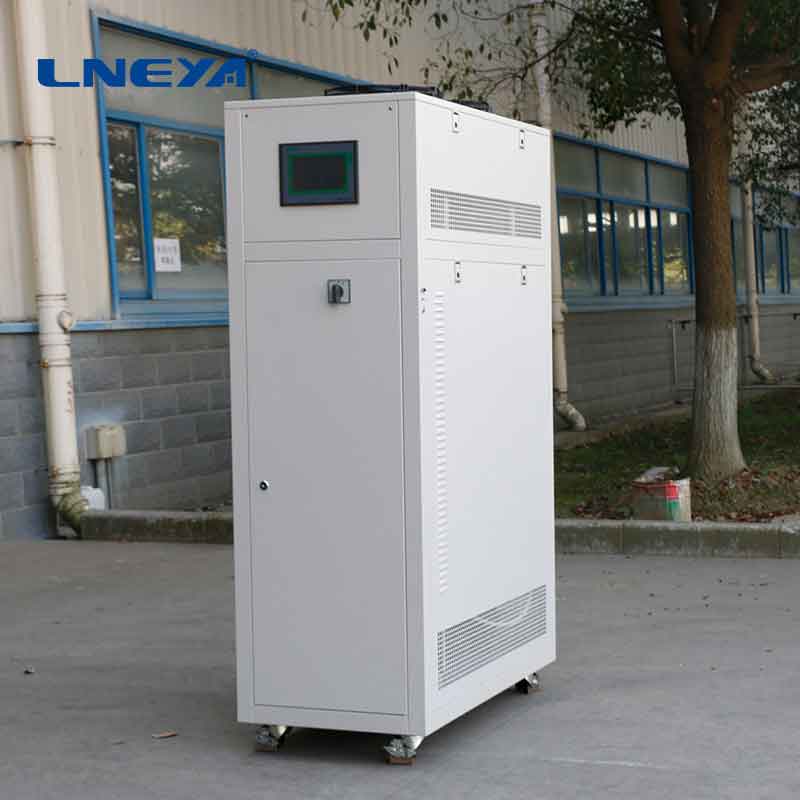glycol tank chiller
Glycol Tank Chillers: Enhancing Industrial Cooling Efficiency
Glycol tank chillers are an essential component in many industrial processes where consistent and reliable cooling is required. These chillers use a mixture of water and glycol to improve heat transfer efficiency and provide protection against freezing and scaling. This article provides an overview of glycol tank chillers, their advantages, and the factors that should be considered when implementing these systems.

Function of Glycol Tank Chillers
Preventing Freezing:
Glycol is added to water to lower its freezing point, which is crucial in applications where the chiller may be exposed to sub-zero temperatures.
Scaling Inhibition:
Glycol helps to inhibit scaling, which can reduce the efficiency of heat transfer and cause damage to the chiller components.
Improved Heat Transfer:
The glycol mixture has a higher heat capacity than water alone, which allows for more efficient heat transfer and improved cooling performance.
Benefits of Glycol Tank Chillers
Reliability in Cold Conditions:
Glycol tank chillers ensure reliable operation in cold environments by preventing the cooling fluid from freezing.
Extended Equipment Life:

By preventing scaling and corrosion, glycol tank chillers help to extend the life of the cooling system and associated equipment.
Versatility:
These chillers can be used in a wide range of applications, from industrial processes to commercial HVAC systems.
Components of Glycol Tank Chillers
Chiller Unit:
The chiller unit is responsible for cooling the glycol mixture to the desired temperature.
Glycol Mix Tank:
The tank stores the glycol mixture and ensures a consistent concentration of glycol in the solution.
Pumps and Circulation System:
Pumps circulate the glycol mixture through the system, ensuring even distribution of cooling.
Control System:
A control system monitors and adjusts the operation of the chiller to maintain the desired temperature and glycol concentration.
Installation Considerations

System Sizing:
The chiller and glycol tank must be appropriately sized to handle the heat load of the application.
Location:
The chiller and tank should be installed in a location that provides easy access for maintenance and protection from the elements.
Piping and Insulation:
Proper piping and insulation are essential to prevent heat loss and maintain the efficiency of the system.
Maintenance Requirements
Glycol Concentration:
Regular checks and adjustments to the glycol concentration are necessary to ensure optimal performance.
System Cleanliness:
Regular cleaning of the system, including the heat exchanger and pump, is crucial for maintaining efficiency.
Component Inspection:
Periodic inspection of components, such as the compressor and cooling fans, is necessary to prevent failures and extend the life of the system.
Conclusion
Glycol tank chillers offer a reliable and efficient cooling solution for a variety of industrial and commercial applications. Their ability to prevent freezing and scaling, along with their improved heat transfer capabilities, make them an ideal choice for environments where consistent cooling is required. Proper installation, sizing, and regular maintenance are essential for ensuring the optimal performance and longevity of these systems.
Note: This article is intended for informational purposes only and should not be considered as professional advice. For specific applications, it is recommended to consult with a qualified HVAC professional.
Related recommendations
process chilled water system
367Process Chilled Water System: A Comprehensive GuideIn the realm of industrial and commercial operations, maintaining optimal temperatures for various processes is often essential for efficiency, ...
View detailsportable industrial chiller units
500Introduction to Portable Industrial Chiller Units Portable industrial chiller units are compact, self-contained systems that provide precise temperature control for a wide range of industrial a...
View detailsHow to solve the high pressure of semiconductor chiller compressor?
1301How to solve the high pressure of semiconductor chiller compressor? Firstly, the basic approach to solving the high-pressure problem of semiconductor cooler compressors is to identify t...
View detailsmost efficient heating system
554The Most Efficient Heating System: An In-Depth Analysis Heating systems are a cornerstone of modern comfort, with efficiency and environmental impact being key considerations in their selection...
View details
 LNEYA Chiller
LNEYA Chiller





HelloPlease log in